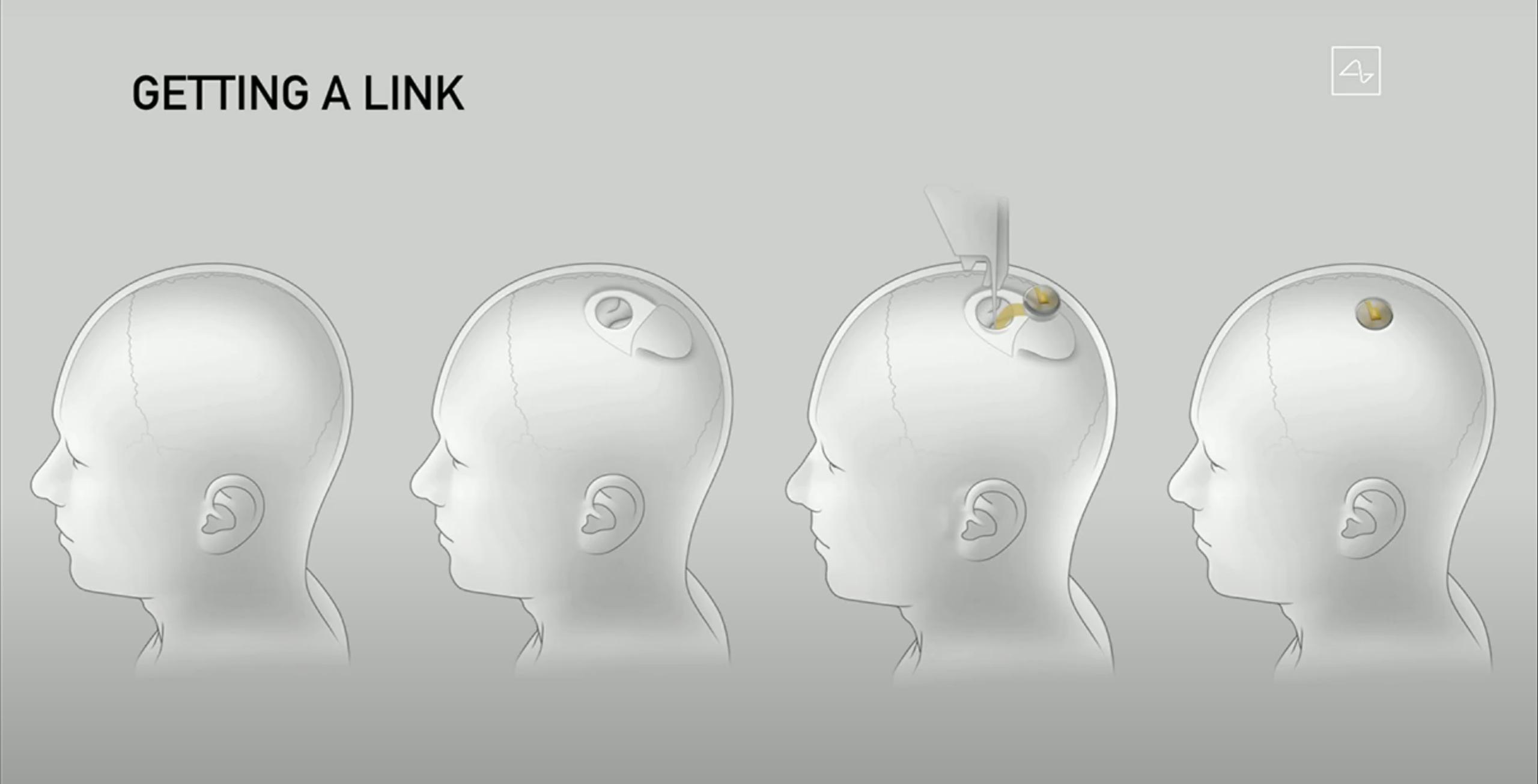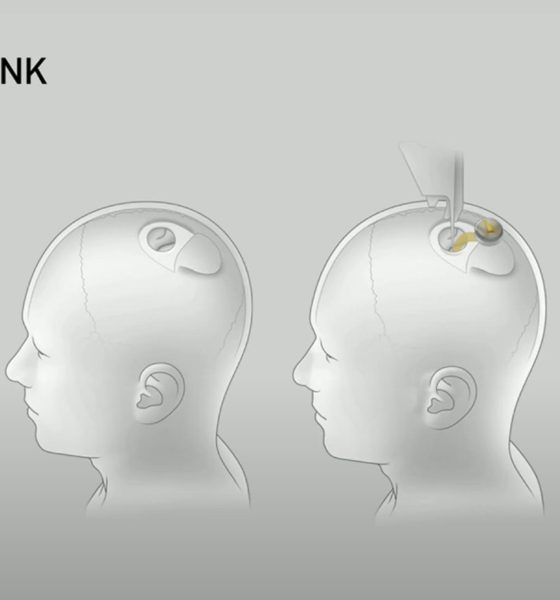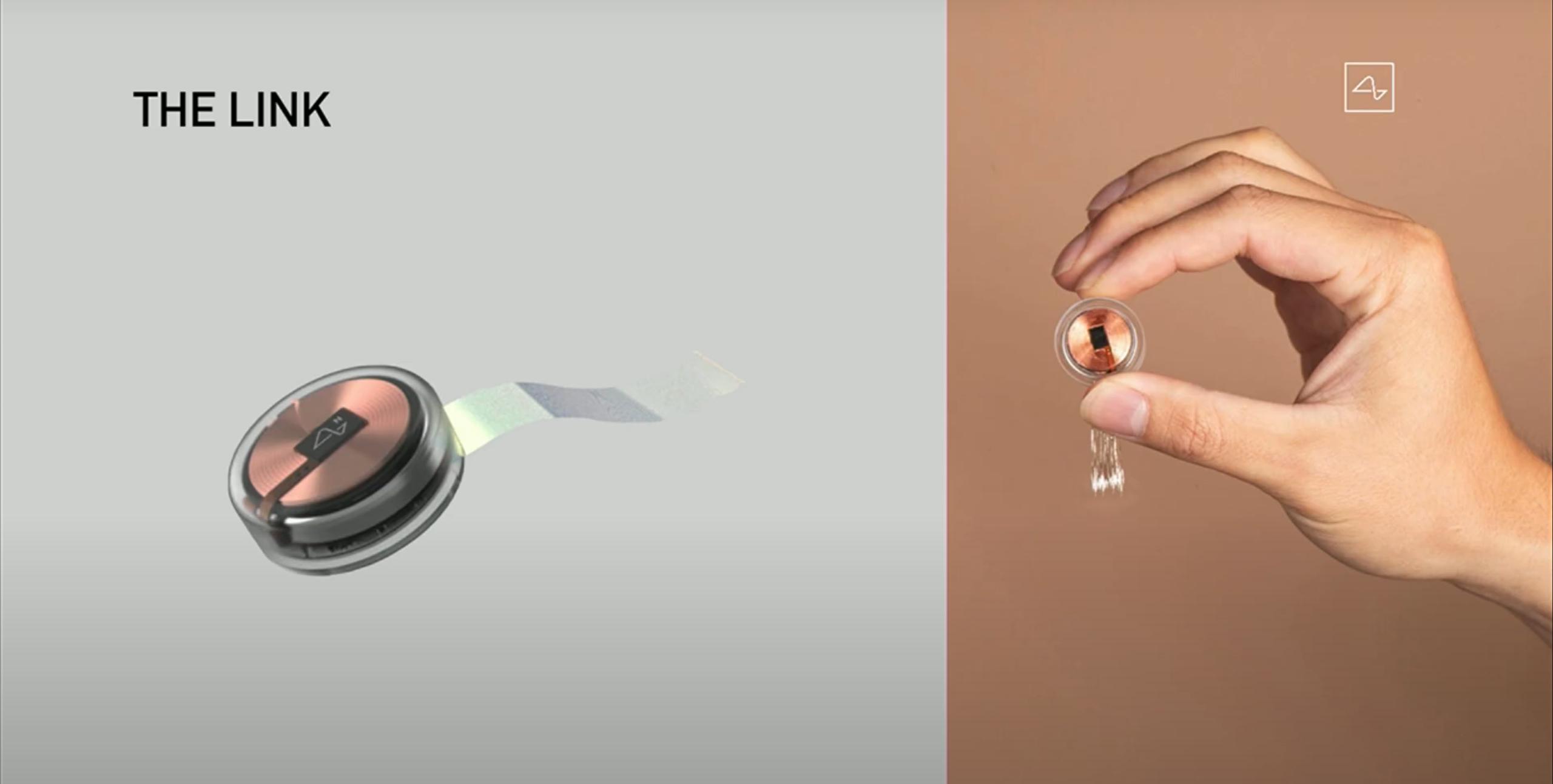

News
Elon Musk bets on Neuralink over smart devices from ‘yesterday’s’ technology
Elon Musk’s brain-machine interface company, Neuralink, has inspired the imagination of tech enthusiasts since its first public presentation in 2019. However, anyone hoping for a ‘smart’ device that talks to implants in their brain someday will just have to hope elsewhere. According to Musk, wearables and handhelds will soon be left in the dust in favor of surgically-fitted devices instead.
“Definitely not. Smartwatches & phones are yesterday’s technology, Neuralinks are the future,” the CEO claimed on Twitter in response to a CleanTechnica article reporting that Tesla was in talks to develop such types of consumer devices. A partnership between the all-electric car manufacturer and Chinese company Huami Technology was said to be in place for a smartwatch release on September 15th.
The false claim is a bit odd, especially coming from Huami CEO Huang Wang, as is claimed in the original article published by Chinese news site IT Home. Perhaps it was for publicity, or a Tesla-oriented app is what was being referenced. Regardless, Musk’s stance is clear on the issue even though he’s used existing smart devices to explain Neuralink’s long-term goals. “It’s like a FitBit in your skull with tiny wires,” Musk half-joked at this year’s live-streamed presentation.
Definitely not. Smartwatches & phones are yesterday’s technology, Neuralinks are the future.
— Elon Musk (@elonmusk) September 14, 2020
While Neuralink’s brain interface won’t have externally wearable tech, its functionality certainly has many analogous features. For instance, charging the device is done inductively, much like wireless smartphones are done today. The chip will also have app-type capabilities that phones and wearables provide to their users like health monitoring and, eventually, the ability to browse the Internet. Clearly, Musk is betting on graphics that are presented directly to the human brain for processing instead of asking the eyes to interpret the information first.

Additionally, automated processes that are designated with the ‘smart’ label are also involved in Neuralink’s technology. A ‘smart’ robot installs the device – something that will eventually be accomplished within an hour. The automation is critical to meet the company’s goals of placing the required electrodes as an outpatient procedure without general anesthesia, bleeding, or noticeable damage. The robot is “still far from LASIK,” but “could get pretty close in a few years,” Musk detailed in a tweet prior to the event last month.
Musk’s idea for Neuralink took off after Vox Media’s Recode Code Conference in 2016, wherein he discussed tackling the idea of creating a brain-implanted neural lace to ward off the threat of bad actors in artificial intelligence. In the big picture, humans and computers will be able to work symbiotically. For now, though, Neuralink’s brain implant will be geared towards health issues such as restoring limb function, improving human movement, resolving issues with eyesight and hearing, and helping with diseases like Parkinson’s and Alzheimer’s.

News
Nvidia CEO Jensen Huang explains difference between Tesla FSD and Alpamayo
“Tesla’s FSD stack is completely world-class,” the Nvidia CEO said.

NVIDIA CEO Jensen Huang has offered high praise for Tesla’s Full Self-Driving (FSD) system during a Q&A at CES 2026, calling it “world-class” and “state-of-the-art” in design, training, and performance.
More importantly, he also shared some insights about the key differences between FSD and Nvidia’s recently announced Alpamayo system.
Jensen Huang’s praise for Tesla FSD
Nvidia made headlines at CES following its announcement of Alpamayo, which uses artificial intelligence to accelerate the development of autonomous driving solutions. Due to its focus on AI, many started speculating that Alpamayo would be a direct rival to FSD. This was somewhat addressed by Elon Musk, who predicted that “they will find that it’s easy to get to 99% and then super hard to solve the long tail of the distribution.”
During his Q&A, Nvidia CEO Jensen Huang was asked about the difference between FSD and Alpamayo. His response was extensive:
“Tesla’s FSD stack is completely world-class. They’ve been working on it for quite some time. It’s world-class not only in the number of miles it’s accumulated, but in the way it’s designed, the way they do training, data collection, curation, synthetic data generation, and all of their simulation technologies.
“Of course, the latest generation is end-to-end Full Self-Driving—meaning it’s one large model trained end to end. And so… Elon’s AD system is, in every way, 100% state-of-the-art. I’m really quite impressed by the technology. I have it, and I drive it in our house, and it works incredibly well,” the Nvidia CEO said.
Nvidia’s platform approach vs Tesla’s integration
Huang also stated that Nvidia’s Alpamayo system was built around a fundamentally different philosophy from Tesla’s. Rather than developing self-driving cars itself, Nvidia supplies the full autonomous technology stack for other companies to use.
“Nvidia doesn’t build self-driving cars. We build the full stack so others can,” Huang said, explaining that Nvidia provides separate systems for training, simulation, and in-vehicle computing, all supported by shared software.
He added that customers can adopt as much or as little of the platform as they need, noting that Nvidia works across the industry, including with Tesla on training systems and companies like Waymo, XPeng, and Nuro on vehicle computing.
“So our system is really quite pervasive because we’re a technology platform provider. That’s the primary difference. There’s no question in our mind that, of the billion cars on the road today, in another 10 years’ time, hundreds of millions of them will have great autonomous capability. This is likely one of the largest, fastest-growing technology industries over the next decade.”
He also emphasized Nvidia’s open approach, saying the company open-sources its models and helps partners train their own systems. “We’re not a self-driving car company. We’re enabling the autonomous industry,” Huang said.
Elon Musk
Elon Musk confirms xAI’s purchase of five 380 MW natural gas turbines
The deal, which was confirmed by Musk on X, highlights xAI’s effort to aggressively scale its operations.

xAI, Elon Musk’s artificial intelligence startup, has purchased five additional 380 MW natural gas turbines from South Korea’s Doosan Enerbility to power its growing supercomputer clusters.
The deal, which was confirmed by Musk on X, highlights xAI’s effort to aggressively scale its operations.
xAI’s turbine deal details
News of xAI’s new turbines was shared on social media platform X, with user @SemiAnalysis_ stating that the turbines were produced by South Korea’s Doosan Enerbility. As noted in an Asian Business Daily report, Doosan Enerbility announced last October that it signed a contract to supply two 380 MW gas turbines for a major U.S. tech company. Doosan later noted in December that it secured an order for three more 380 MW gas turbines.
As per the X user, the gas turbines would power an additional 600,000+ GB200 NVL72 equivalent size cluster. This should make xAI’s facilities among the largest in the world. In a reply, Elon Musk confirmed that xAI did purchase the turbines. “True,” Musk wrote in a post on X.
xAI’s ambitions
Recent reports have indicated that xAI closed an upsized $20 billion Series E funding round, exceeding the initial $15 billion target to fuel rapid infrastructure scaling and AI product development. The funding, as per the AI startup, “will accelerate our world-leading infrastructure buildout, enable the rapid development and deployment of transformative AI products.”
The company also teased the rollout of its upcoming frontier AI model. “Looking ahead, Grok 5 is currently in training, and we are focused on launching innovative new consumer and enterprise products that harness the power of Grok, Colossus, and 𝕏 to transform how we live, work, and play,” xAI wrote in a post on its website.
Elon Musk
Elon Musk’s xAI closes upsized $20B Series E funding round
xAI announced the investment round in a post on its official website.

xAI has closed an upsized $20 billion Series E funding round, exceeding the initial $15 billion target to fuel rapid infrastructure scaling and AI product development.
xAI announced the investment round in a post on its official website.
A $20 billion Series E round
As noted by the artificial intelligence startup in its post, the Series E funding round attracted a diverse group of investors, including Valor Equity Partners, Stepstone Group, Fidelity Management & Research Company, Qatar Investment Authority, MGX, and Baron Capital Group, among others.
Strategic partners NVIDIA and Cisco Investments also continued support for building the world’s largest GPU clusters.
As xAI stated, “This financing will accelerate our world-leading infrastructure buildout, enable the rapid development and deployment of transformative AI products reaching billions of users, and fuel groundbreaking research advancing xAI’s core mission: Understanding the Universe.”
xAI’s core mission
Th Series E funding builds on xAI’s previous rounds, powering Grok advancements and massive compute expansions like the Memphis supercluster. The upsized demand reflects growing recognition of xAI’s potential in frontier AI.
xAI also highlighted several of its breakthroughs in 2025, from the buildout of Colossus I and II, which ended with over 1 million H100 GPU equivalents, and the rollout of the Grok 4 Series, Grok Voice, and Grok Imagine, among others. The company also confirmed that work is already underway to train the flagship large language model’s next iteration, Grok 5.
“Looking ahead, Grok 5 is currently in training, and we are focused on launching innovative new consumer and enterprise products that harness the power of Grok, Colossus, and 𝕏 to transform how we live, work, and play,” xAI wrote.








